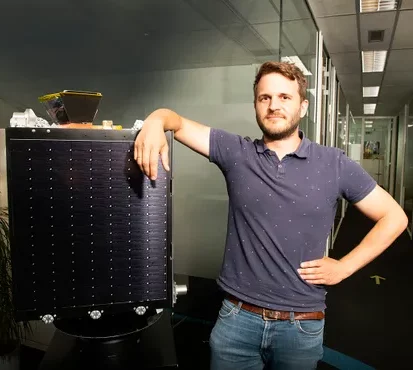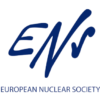A New Age Of Innovation In The Nuclear Sector

Guerric de Crombrugghe
Winter 1848, a carpenter by the name of James Wilson Marshall finds gold in a river near Sacramento. This discovery marked the beginning of the California Gold Rush, which would have a profound impact on the United States. It brought around 300,000 people, hoping for their own share of the newly found wealth. While some miners became immensely rich, the vast majority of them would only find disappointment. This led to the famous quote, attributed to Mark Twain: “the secret to getting rich in a gold rush is selling picks and shovels”. Indeed, the gold rushes spurred a wave of innovations, from hydraulic mining to heavy-duty Levi Jeans, and sped up the deployment of critical infrastructures such as the first transcontinental railroad.
Abundant and clean energy is the new gold. Innovation in the nuclear sector often rhymes with small modular reactors, fusion, and other moon shots that will take years, if not decades, to materialize. These efforts can prove instrumental to guarantee Europe’s long-term, sovereign access to clean energy. Those who fail will nonetheless advance science and technology and allow the community to identify false hopes. As in a gold rush, the successful ones will bring immense wealth to a handful of people.
In the meanwhile, public support for nuclear energy is growing at the global level – with the exception of a few remaining hardliners. The bottleneck to the massive deployment of nuclear capacity is shifting from political momentum to industrial capability. A few weeks ago, the French nuclear industry association GIFEN declared that meeting the government’s ambitious agenda would require up to 100,000 new workers to join the sector over the next 10 years. The joint statement for the Nuclear Alliance meeting on the 16th of May states 450,000 new employments in the EU over the next 30 years.
How can the industry scale fast enough? This is precisely the conundrum addressed by another wave of innovations coming to the nuclear sector: the picks and shovels. This wave is quieter than the gold seekers, but with a much shorter implementation horizon and a great transformational potential.
Taking a high-level perspective, these can be roughly categorized in three main opportunities.
First, digitising the nuclear industry, which is still largely analog, can improve efficiency while reducing operational burdens. This includes examples such as virtual reality to train operators, or field service management software for increased traceability.
Second, leveraging advances in robotics and automation can reduce manpower requirements while improving workers safety. Some examples here would be autonomous platforms for radioactivity mapping, or flexible systems to operate in harsh environments that were not originally designed for robots.
Third, using the latest construction technologies can diminish the cost profile of nuclear energy. This concerns examples such as additive manufacturing for complex parts, or prefabricated modules to seize the cost and planning benefits of offsite construction.
These innovations have an interesting trait in common: they are disruptive, i.e. a narrowly defined technology domain, applicable to a wide range of problems. In other words, they are relevant for other technically complex and heavily regulated industries, such as aerospace, health and pharmaceutical, or even security and defence. Leveraging on cross-sectoral standardization is a clear benefit, driving costs down and improving the supply chain’s resilience. This is in-line with the recommendation from the Nuclear Energy Agency’s Nuclear Innovation 2050 initiative to “integrate advanced technologies from other industrial sectors“.
Each of these enabling technologies incrementally improves the design, licensing, and operation of nuclear systems. Their use in operational environments can accelerate the deployment of new builds, optimize the exploitation of existing assets, and ameliorate dismantling and waste management. Ultimately, this further boosts political support, feeding a positive feedback loop.
So far, the general attitude of the nuclear industry towards innovation appears to be rather positive and open-minded. Let’s nurture this spirit of good will and foster the role of innovation as a catalyst for more nuclear capacity in the global energy mix. Let’s identify and encourage the most useful picks and shovels and speed up our collective quest for gold.
Guerric de Crombrugghe (Nuketech)
Guerric de Crombrugghe
Guerric de Crombrugghe holds a master in electromechanical engineering, a master in fluid dynamics, and a doctoral degree in aeronautics. After a career at the edge of business and innovation in the aerospace industry, which included launching and selling a satellite start-up, he got interested in the nuclear sector. He is now setting up a venture capital firm, Nuketech, focused on early-stage startups active in nuclear energy. He is also a member of the Scientific Council of the Nuclear Valley, in France.
